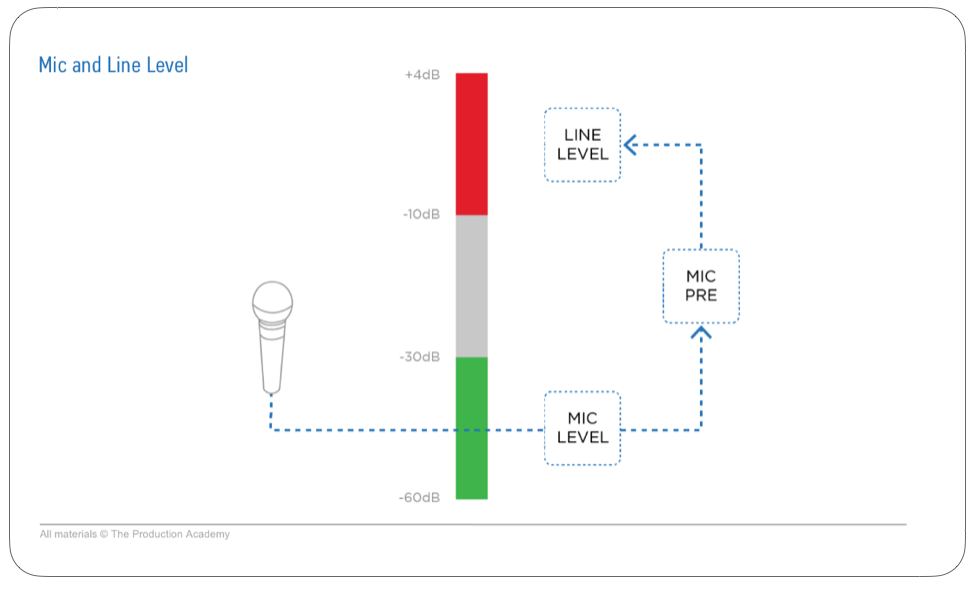018 – Mic vs. Line Level
We use varying signal levels throughout our audio system.
Written by Scott Adamson
As the signal travels all the way from the mic to the speaker, it goes through the signal chain. And in that chain, we use different signal levels, each of which has a different purpose.
First of all, microphones have a very low output signal, which we call mic level. And that's just because the mechanics of a microphone don't generate that much power. Remember, it's a transducer, and changing sound into a signal is not necessarily an efficient process.
When we plug the microphone into the console, the very first thing in the signal chain is the microphone preamplifier, which we usually just call a mic pre. This adds Gain to the mic level signal and boosts it up to line level.
Controlling the Gain on the mic pre is one of the most important things you’ll do in audio. Since it’s the first step in the signal chain of the console, everything else will be affected by it. And if we get a solid line level signal that’s not clipping, we’ll have much better sound down the line.
Get real-world live sound mixing tips straight to your inbox.
When connecting two pieces of audio equipment, make sure that you know which type of signal you're using. If you send a line level output to a mic level input, you could clip that input very easily.
Or, if you plug a microphone into something that's expecting a line level input, you won't really hear anything - the signal will be way too low. You need a mic pre to boost the signal up to line level first.




